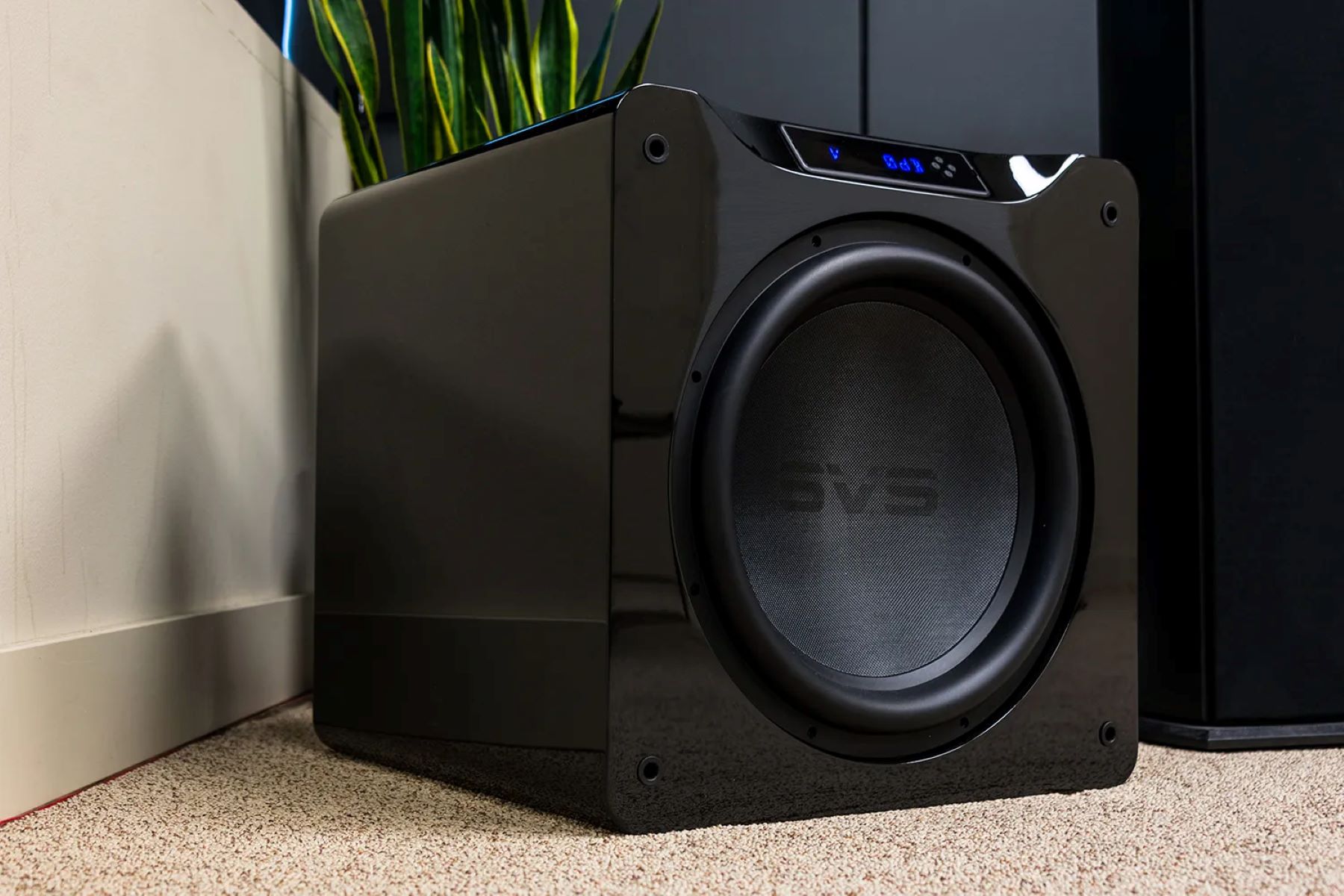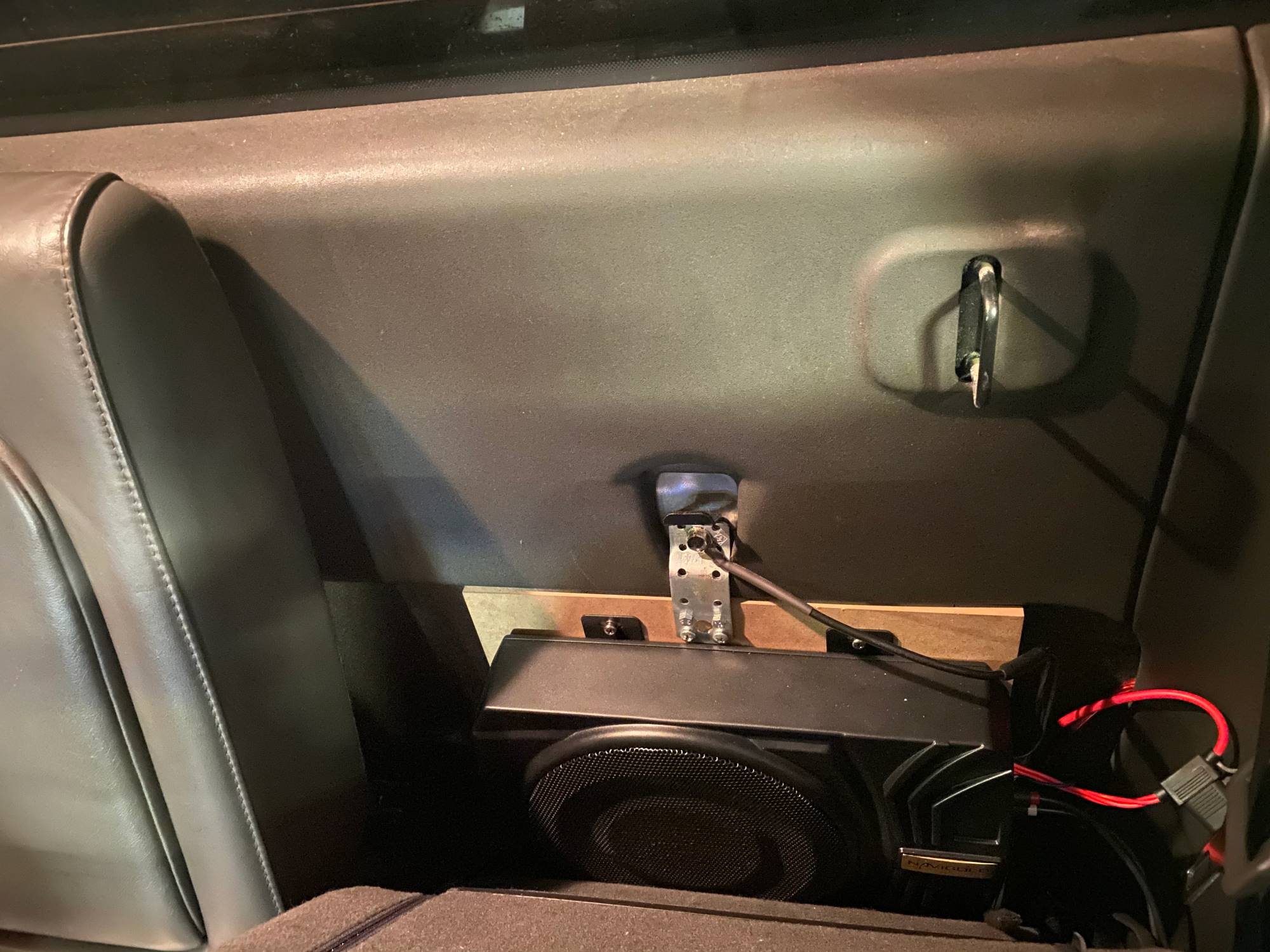Home>Devices & Equipment>Subwoofer>How To Properly Break In A Subwoofer


Subwoofer
How To Properly Break In A Subwoofer
Published: January 21, 2024
Learn the proper way to break in your subwoofer for maximum performance and longevity. Our step-by-step guide will help you get the most out of your subwoofer.
(Many of the links in this article redirect to a specific reviewed product. Your purchase of these products through affiliate links helps to generate commission for AudioLover.com, at no extra cost. Learn more)
Table of Contents
- Introduction
- Why is it important to break in a subwoofer?
- How long does the break-in process take?
- Step 1: Playing at low volumes
- Step 2: Gradually increasing volume
- Step 3: Varying frequencies and tones
- Step 4: Testing different music genres
- Step 5: Allowing adequate rest periods
- Step 6: Fine-tuning subwoofer settings
- Conclusion
Introduction
Welcome to the world of deep bass and powerful sound! If you are a true audiophile or a music enthusiast, then you understand the importance of having a quality subwoofer in your audio setup. A subwoofer is an essential component that brings depth and richness to your music, movies, and overall audio experience.
While purchasing a subwoofer is the first step towards enhancing your sound system, it’s important to remember that the journey doesn’t end there. In fact, it’s crucial to properly break in your subwoofer before unleashing its full potential. But what exactly does it mean to break in a subwoofer? And why is it important?
In this article, we will delve into the world of subwoofer break-in and explore the reasons why it’s vital to go through this process. We will also provide you with a step-by-step guide on how to properly break in your subwoofer to ensure optimal performance and longevity.
So, whether you are a newcomer to the realm of subwoofers or a seasoned audio enthusiast looking to upgrade your system, read on to discover the secrets to unlocking the true potential of your subwoofer!
Why is it important to break in a subwoofer?
You may be wondering why breaking in a subwoofer is necessary when you could simply plug it in and start enjoying deep bass right away. Well, the truth is that subwoofers, like any other mechanical device, need some time to reach their optimal performance level. Here are a few reasons why it’s important to break in your subwoofer:
- Flex the suspension: Subwoofers have a suspension system that allows the cone to move back and forth. Breaking in the subwoofer helps loosen and flex this suspension, which improves the subwoofer’s ability to accurately reproduce sound.
- Even out the voice coil: Subwoofers contain a voice coil that generates the magnetic field necessary for sound production. Breaking in the subwoofer helps stabilize and evenly distribute the voice coil’s movement, ensuring smooth and consistent performance.
- Reduce distortion: Like any speaker, a subwoofer can produce distortion during its initial use. Breaking in the subwoofer helps alleviate this distortion and allows the speaker to operate more efficiently, leading to cleaner and more accurate bass reproduction.
- Enhance durability: Breaking in the subwoofer helps condition and strengthen the mechanical components, such as the cone, surround, and spider. This process improves the subwoofer’s durability and ensures it can handle the demands of prolonged use at higher volumes.
- Achieve optimal sound quality: Ultimately, breaking in your subwoofer allows it to reach its full potential in terms of sound quality. By following the proper break-in process, you can ensure that your subwoofer delivers deep, tight, and precise bass that enhances your overall audio experience.
Now that you understand the importance of breaking in a subwoofer, let’s move on to the step-by-step guide on how to properly break in your subwoofer.
How long does the break-in process take?
The duration of the break-in process for a subwoofer can vary depending on various factors, such as the brand, model, and type of subwoofer, as well as the specific components it contains. While there is no set-in-stone timeline for the break-in process, it generally ranges from 20 to 40 hours of continuous use.
It’s important to note that the break-in process is not a one-time event but rather a gradual and ongoing process. During the break-in period, the subwoofer’s performance will gradually improve as the mechanical components settle and adjust to regular use.
It’s essential to exercise patience during the break-in process and avoid pushing the subwoofer to its limits too early. Rushing the process or subjecting the subwoofer to excessive volumes can potentially cause damage or compromise its long-term performance.
Every subwoofer manufacturer may have their own recommendations regarding the break-in period. It’s advisable to consult the manual or contact the manufacturer directly to get specific guidelines for your particular subwoofer model.
Remember, the break-in process is crucial for ensuring optimal performance and longevity of your subwoofer. So, let’s move on to the step-by-step guide on how to properly break in your subwoofer.
Step 1: Playing at low volumes
The first step in breaking in your subwoofer is to start off by playing it at low volumes. This allows the subwoofer’s components to gradually warm up and begin the process of settling in.
Begin by setting the volume on your audio system to a conservative level, well below the subwoofer’s maximum output. This will prevent any potential damage or distortion that could occur from pushing the subwoofer too hard during the initial stages of the break-in process.
Choose some bass-heavy tracks or movies that you enjoy and start playing them through your subwoofer. Focus on music or movie scenes that feature consistent bass elements, as this will help facilitate the break-in process. You can also use test tones specifically designed for subwoofers to ensure a smooth and controlled range of frequencies.
Let the subwoofer play at this low volume for several hours. This allows the various components, such as the cone, voice coil, and suspension, to begin loosening up and adjusting to the workload they will encounter during regular use.
Remember, during this phase, the volume should remain at a level where the subwoofer is audible but not excessively loud. The goal is to gradually acclimate the subwoofer to higher volumes over time.
Continue playing the subwoofer at low volumes for approximately 10-15 hours, or as per the manufacturer’s recommendations. This will lay the foundation for the subsequent steps in the break-in process.
Now that the subwoofer has been playing at low volumes, it is ready to progress to the next step in the break-in process. Keep reading to discover what the next step entails.
Step 2: Gradually increasing volume
After the initial period of playing your subwoofer at low volumes, it’s time to gradually increase the volume to continue the break-in process. The purpose of this step is to further exercise and condition the subwoofer’s components.
Start by gradually raising the volume on your audio system, ensuring a smooth and controlled increase. You want to avoid sudden jumps in volume that could potentially damage the subwoofer or cause distortion. Increase the volume incrementally, allowing the subwoofer to acclimate to each new level for a period of time before raising it further.
Continue playing bass-heavy music or movie scenes with consistent bass content during this step. The key is to expose the subwoofer to a wide range of frequencies and dynamic bass variations to facilitate a thorough break-in.
As you gradually increase the volume, pay close attention to the subwoofer’s performance. Listen for any signs of distortion or strain, and if you notice such signs, reduce the volume slightly to alleviate the stress on the subwoofer. It’s important to strike a balance between pushing the subwoofer to exercise its components and avoiding excessive stress or damage.
During this step, aim to play the subwoofer at increased volume levels for approximately 10-15 hours or as recommended by the manufacturer. This will further condition the subwoofer’s components and prepare it for the next stages of the break-in process.
Now that you have gradually increased the volume, it’s time to move on to the next step, where we will explore the importance of varying frequencies and tones in the break-in process.
Step 3: Varying frequencies and tones
Now that you have progressed through the initial steps of the break-in process, it’s time to focus on exposing your subwoofer to varying frequencies and tones. This step is crucial for ensuring a well-rounded break-in and optimal performance across the entire frequency range.
Start by playing a variety of music genres that feature different bass tones and frequencies. This will help exercise the subwoofer’s components and ensure that it can accurately reproduce a wide range of bass frequencies.
Experiment with different music styles such as rock, hip-hop, jazz, classical, electronic, and more. Each genre will have its own unique bass characteristics and nuances, allowing the subwoofer to encounter a diverse set of frequencies.
Additionally, consider using test tones specifically designed to cover different frequency ranges. Many audio enthusiasts use audio testing software or tracks that systematically sweep through various frequencies to thoroughly exercise the subwoofer’s capabilities.
During this step, feel free to adjust the volume as needed to ensure that the subwoofer is accurately reproducing the various frequencies without strain or distortion. It’s important to find a balance where the subwoofer is being pushed to its limits without pushing it too hard.
Continue exposing your subwoofer to varying frequencies and tones for an additional 10-15 hours or as recommended by the manufacturer. This will further enhance the subwoofer’s ability to produce accurate and well-defined bass throughout the frequency spectrum.
Now that your subwoofer has been exposed to various frequencies and tones, it’s time to move on to the next step, where we will explore the importance of testing different music genres in the break-in process.
Step 4: Testing different music genres
In order to fully break in your subwoofer and optimize its performance, it’s essential to test it with different music genres. Each genre has its own unique characteristics, which will challenge the subwoofer in different ways and allow it to adapt to various sonic elements.
Start by selecting a diverse range of music genres that you enjoy. This can include rock, pop, classical, jazz, hip-hop, electronic, and any other genres that pique your interest. The goal is to expose the subwoofer to the wide spectrum of musical styles and their respective bass signatures.
When selecting songs within each genre, try to choose tracks that feature pronounced bass lines or deep low-frequency elements. This will allow the subwoofer to showcase its ability to reproduce impactful and accurate bass in different musical contexts.
As you listen to songs from different genres, pay close attention to the subwoofer’s performance. Is the bass tight and well-defined? Does it blend seamlessly with the rest of the music? Are there any signs of strain or distortion? Adjust the volume and subwoofer settings as needed to achieve the optimal balance and ensure the best possible sound quality.
By testing your subwoofer with different music genres, you’ll be able to assess its versatility and performance across various styles of music. This step ensures that your subwoofer is refined and well-rounded, capable of delivering an immersive audio experience regardless of the genre you’re listening to.
Continue testing different music genres for a minimum of 10-15 hours or longer, depending on your preference and the manufacturer’s recommendations. This will further refine the subwoofer’s ability to handle the bass demands of different musical genres.
Now that you’ve explored the importance of testing different music genres, it’s time to move on to the next step, which involves allowing adequate rest periods for your subwoofer.
Step 5: Allowing adequate rest periods
While it may be tempting to continuously play your subwoofer throughout the break-in process, it’s important to give it proper rest periods. Allowing your subwoofer to rest between sessions is crucial for preventing overheating and ensuring its long-term durability.
During the break-in process, it’s recommended to let your subwoofer rest for at least 20-30 minutes after every few hours of continuous use. This will give the internal components, such as the voice coil and amplifier, a chance to cool down and recover.
When giving your subwoofer a rest, make sure to turn it off completely. This will help conserve energy and also give the electronic components a chance to reset and recalibrate for optimal performance.
Additionally, during the rest periods, it’s a good idea to inspect the subwoofer for any signs of overheating or damage. Check for any unusual smells, excessive heat, or abnormal sounds that could indicate a problem. If you notice anything out of the ordinary, consult the manufacturer or an experienced technician for further guidance.
Remember, the break-in process is not a race; it’s a gradual journey towards achieving the best possible performance from your subwoofer. Allowing proper rest periods ensures that the subwoofer remains in optimal condition and can continue to deliver excellent sound quality for years to come.
By incorporating regular rest periods into your subwoofer break-in process, you’re taking a proactive approach to maintaining the longevity and performance of your audio equipment.
Now that you understand the importance of allowing adequate rest periods, let’s move on to the final step in the break-in process, which involves fine-tuning the subwoofer settings to further optimize its performance.
Step 6: Fine-tuning subwoofer settings
After completing the previous steps of the break-in process, it’s time to fine-tune the settings of your subwoofer to ensure optimal performance in your specific audio setup. Fine-tuning the subwoofer settings allows you to customize the sound to your preferences and the characteristics of your listening environment.
Start by adjusting the crossover frequency. This setting determines the point at which the subwoofer takes over from the main speakers in reproducing the lower frequencies. Experiment with different crossover frequencies to find the setting that seamlessly blends the subwoofer’s bass output with the main speakers for a cohesive soundstage.
You should also adjust the phase control to align the subwoofer’s output with the main speakers. This helps prevent any phase cancellation and ensures a more accurate and balanced sound. Use the built-in phase control or consult the subwoofer’s manual for instructions on how to adjust it.
Additionally, if your subwoofer has an EQ (equalizer) feature, take the time to fine-tune it. An EQ allows you to boost or cut specific frequencies to compensate for the acoustic characteristics of your listening room. Experiment with the EQ settings to achieve the desired balance and eliminate any unwanted resonances or deficiencies in the bass response.
It’s also worth exploring the different sound modes or presets that may be available on your subwoofer. These presets can enhance specific types of music or movie genres, providing a tailored listening experience. Try out different presets and see which one suits your preferences and the content you most frequently enjoy.
Throughout the process of fine-tuning the subwoofer settings, trust your ears and make adjustments based on your personal preferences. Take the time to listen to a variety of music and movie scenes to gauge the impact of each adjustment.
By fine-tuning the subwoofer settings, you can further optimize its performance and tailor the sound to your specific audio setup and listening preferences.
Congratulations! You have completed the break-in process for your subwoofer. By following these steps and taking the time to properly break in your subwoofer, you can ensure optimal performance, durability, and an immersive listening experience for years to come.
Remember, the break-in process is just the beginning of your journey with your subwoofer. To maintain its performance, make sure to clean it regularly, handle it with care, and consult the manufacturer’s recommendations for ongoing maintenance.
Now sit back, relax, and enjoy the deep, powerful bass that your properly broken-in subwoofer provides!
Conclusion
Congratulations! You have successfully navigated the process of breaking in your subwoofer. By following the step-by-step guide provided in this article, you have ensured that your subwoofer is properly conditioned to deliver optimal sound quality, durability, and performance.
Breaking in a subwoofer is a crucial step in maximizing its potential. It allows the subwoofer’s components to settle, flex, and adapt to the demands of regular use, resulting in improved sound reproduction and longevity.
Throughout the break-in process, you’ve learned the importance of playing at low volumes, gradually increasing the volume, exposing the subwoofer to varying frequencies and tones, testing different music genres, allowing adequate rest periods, and fine-tuning the subwoofer settings. Each step plays a vital role in preparing your subwoofer for its ultimate performance.
Remember, the break-in process is not a one-time event, but rather an ongoing journey. As you continue to enjoy your subwoofer, it will further refine its performance over time, and you may find that it continues to sound better as it gets more use.
Furthermore, always consult the manufacturer’s recommendations and guidelines specific to your subwoofer model. They may have additional instructions or considerations for the break-in process.
Now that your subwoofer is properly broken in, you can fully appreciate the deep bass, power, and immersion it brings to your audio setup. Whether you’re watching movies, listening to music, or playing video games, the subwoofer will enhance your overall audio experience and provide you with a new level of enjoyment.
So sit back, relax, and let the thumping bass engulf you as you revel in the immersive soundstage created by your meticulously broken-in subwoofer. Enjoy the journey, and may your music and movies never be the same again!











